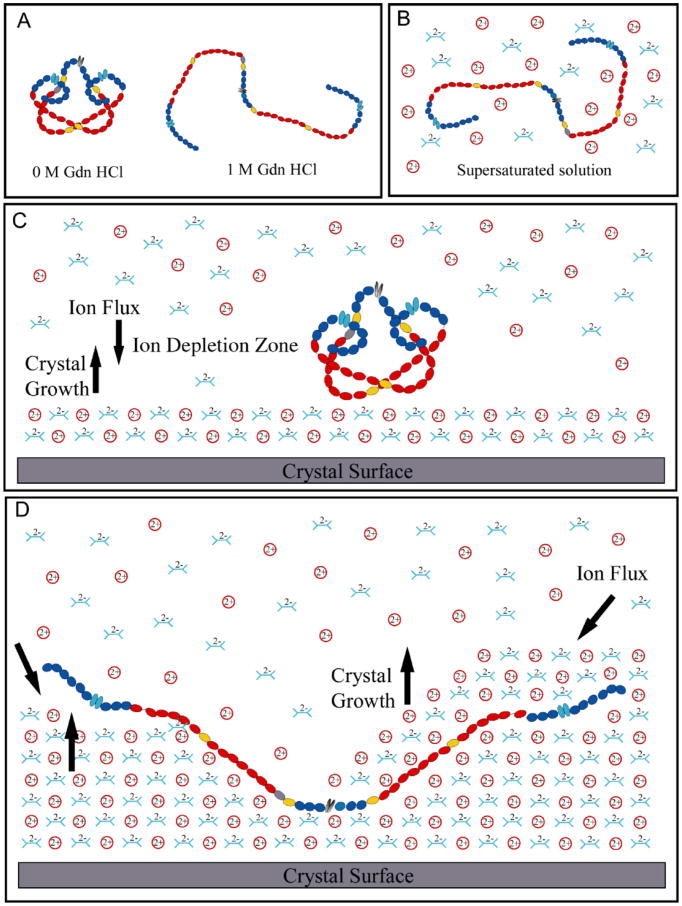Fig. 3.
Schematic model illustrating how Fn might interact with a growing COM crystal. (A) Schematic sketch of putative Fn conformations in GdnHCl solution. (B) The ionic nature of the supersaturated crystallizing solution may disrupt the electrostatic bonds just enough to partially extend the protein. (C) The protein reverts to its most compact conformation once adsorbed to a charged, but electrostatically neutral COM face. The large protein blocks ions in solution from accessing the growing crystal surface, creating a zone of ion depletion and returning the protein to its compact, globular form. (D) As the crystal continues to grow, charged step edges may come in direct contact with the protein, transitioning from layer to layer growth to roughening caused by adding layers next to a large protein. The presence of the charged step edges poses a mechanical strain on the protein and results in the extension of Fn as growing planes surround it and it becomes embedded within the crystal.

